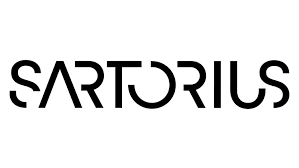Panel Discussion: Measuring protein–protein interactions
Learn how experts in various techniques, such as surface plasmon resonance (SPR) and isothermal titration calorimetry (ITC), measure protein–protein interactions (PPIs) for therapeutic development.
Measuring biomolecular interactions, especially protein–protein interactions, is an essential component in drug discovery, protein engineering and many other spheres of research. However, there are numerous techniques that researchers can use to assess characteristics of biomolecular interactions. Because of this, choosing the right technique can feel overwhelming and applying it to one’s own research can seem daunting.
In this Panel Discussion, join experts in biomolecular interaction research as they explore the importance of investigating PPIs in disease, considerations for selecting the best technique for your goals, limitations and solutions of these techniques and the future of PPI research.
- The role of PPIs in disease
- How to choose the correct technique for your goals
- The limitations that exist when measuring PPIs and potential solutions
- What the future has in store for PPI research
- Basic researchers investigating biomolecular interactions
- Academic and pharma researchers working in drug discovery and development

Stuart Knowling
Senior Application Scientist
Sartorius (Göttingen, Germany)
Stuart Knowling has over a decade of experience in SPR combined with almost twenty years’ worth of experience in biophysical protein and nucleic acid production and characterization.
Using SPR-based technologies, Knowling has initiated and developed multiple assay formats to characterize biosimilar monoclonal antibody-based therapies as part of larger similarity studies. Knowling also has a strong focus on developing target-binding assays across a range of protein and non-protein molecules to meet the needs of his clients at all stages of submission to regulatory bodies.
Knowling is highly active in presenting his work across the globe and is the lead author on multiple SPR guidelines, continuing to advance Octet® SPR by Sartorius so that users can generate high-quality data in the simplest manner possible.

Brittany Morgan
John V. O’Connor Assistant Professor of Cancer Drug Discovery
University of Notre Dame (IN, USA)
Brittany Morgan started her career as an Assistant Professor at the University of Notre Dame in 2022. Her lab is dedicated to studying dynamic and/or disordered structures and their covalent targeting with small molecules. Morgan has received many awards throughout her training, including several fellowships, such as the Barry Goldwater Scholarship, NIH F32, Michigan Life Sciences Fellowship and, most recently, the Burroughs Wellcome Career Award at the Scientific Interface. In addition to her research accomplishments, Morgan has been recognized for her dedication to mentoring, outreach, and service.
 Anthony Mittermaier
Anthony Mittermaier
Professor
McGill University (Montreal, Canada)
Anthony Mittermaier earned a BSc in biophysics from the University of Guelph (Canada) in 1996 and a Ph.D. in biochemistry from the University of Toronto (Canada) in 2003. He joined McGill University’s Chemistry Department in 2005, becoming an Associate Professor in 2011 and a Full Professor in 2022. Since September 2020, he has served as Associate Dean (Student Affairs) in the Faculty of Science. Mittermaier’s research combines biophysical techniques, including calorimetry and NMR spectroscopy, to explore protein, nucleic acid function, and drug design. He received the 2012 Agilent Early Career Professor Award and the 2021 Chemical Biology/Medicinal Chemistry Lectureship Award from the Canadian Society for Chemistry.

Michelle Christie
Research Fellow
Department of Biochemistry and Pharmacology, University of Melbourne (Australia)
Michelle Christie is a protein biochemist and structural biologist. Her research focus is on determining the structure and function of proteins and protein complexes implicated in infectious disease with the aim of developing novel therapeutics. She uses a range of complimentary techniques, including x-ray crystallography, small-angle scattering and cryo-electron microscopy, along with protein interaction studies like ITC, bio-layer interferometry and microscale thermophoresis in her work.
In association with
This webinar was recorded on Thursday 7 December 2023
